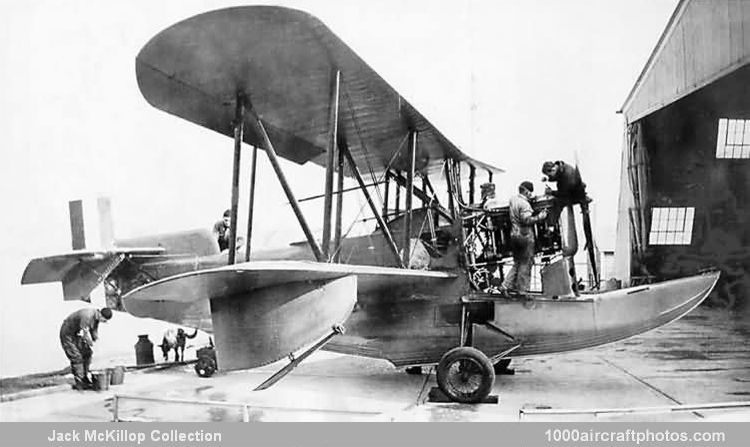02/28/2008. Remarks by Jack McKillop: "The Eighteenth Amendment to the US Constitution prohibited 'the manufacture, sale, or transportation of intoxicating liquors' within the US. This amendment took affect in January 1920 and led to a period of illegal importation of alcoholic beverages from Canada, Mexico and other countries known as Prohibition. The USCG was tasked with intercepting vessels at sea but in many cases, those vessels were faster that the USCG vessels. In combating 'rum running', the USCG made use of aircraft to spot the violators of the law.
Up to 1926, the USCG had used a few aircraft on loan from the Navy, but in that year the US Congress appropriated US$152,000 (US$1.8 million in 2007 dollars) to purchase five aircraft. The first three aircraft ordered were Loening OL-5 amphibians; the aircraft pictured above was the third delivered and was assigned the s/n 3. It was delivered on November 3, 1926 and based at USCG Air Station Gloucester, Massachusetts. This was lost on November 10, 1929 when it struck the mast of a fishing boat in Gloucester harbor and crashed.
Although this aircraft only flew with s/n 3, it was reassigned two different serial numbers after it crashed. In 1934, the USCG adopted a new three-digit system which grouped aircraft in four different categories. All amphibians were assigned numbers in the "100" series and this aircraft was assigned serial number 103. Two years later on October 13, 1936, another system was introduced. This system used the prefix "V" followed by a three digit sequential number. This new series included all aircraft ever used by the USCG whether they were in service or those that had already been destroyed or surveyed. Under this new system, the third serial number for this aircraft was V103."
Read the type remarks on page 12444.
